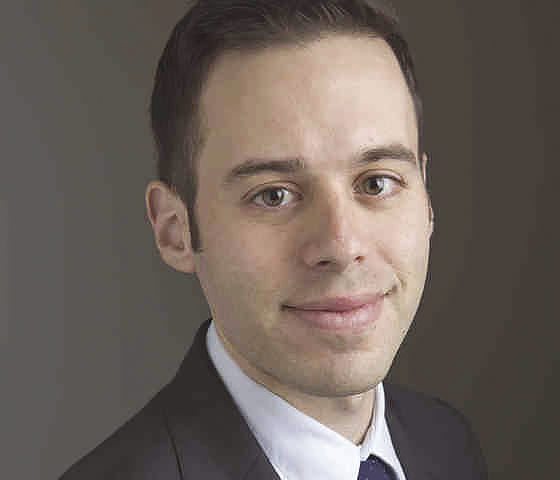BY DROR LADIN
On Wednesday, confirmation hearings were held for Gina Haspel, Donald Trump’s pick to head the CIA — an agency that continues to hide from the American public virtually all information about her role in torture and the destruction of evidence documenting it.
According to The Washington Post, Haspel even sought to withdraw her nomination out of concern about questions that she and the CIA have long avoided.
Although Haspel decided to move forward with the confirmation process after persuasion by White House officials, there is no indication that she has any intention of coming clean about her history helping lead the CIA’s Bush-era torture program. Instead, the CIA is doubling down on a propaganda campaign on Haspel’s behalf, pushing what several senators have called a “superficial narrative” that “does a great disservice to the American people” by denying them basic information about a person poised to assume one of the most powerful roles in the country. According to The Washington Post: “Documents that haven’t been made public, show that Haspel was an enthusiastic supporter of what the CIA was doing.” Those are documents that the American people need to see.
No one could have believed in good faith that the CIA’s torture program was legal.
Since the founding of the United States, our laws have unequivocally prohibited the use of torture and cruelty to extract information or in-flict punishment. The United States has also signed the Convention Against Torture and the Geneva Conventions, both of which categorically prohibit the use of cruel treatment and torture, and has long had criminal statutes that prohibit conduct like assault and homicide.
Nonetheless, a common talking point among CIA torture apologists is that a secret Justice Department “torture memo” that opined that the CIA program was lawful was somehow a license to torture. It was not. All criminal laws still applied to CIA personnel operating in CIA-run facilities overseas.
Anyone who personally witnessed the CIA torture program in action, as Haspel did, would know that it entailed the brutal abuse of help-less prisoners. Haspel knew that prisoners she was responsible for were kept for days chained to the ceiling, naked or in diapers, then slammed face-first into walls, subjected to near-drowning and relentless physical assault, deprived of food and sleep, forced into excruciating stress positions, and stuffed into coffin-like boxes.
Contemporaneous CIA cables describe how those subjected to the CIA program visibly trembled and shook, suffered “involuntary stomach and leg spasms,” became “distressed to the level that he was unable to effectively communicate,” “cried, begged, and pleaded; finally becoming hysterical.” After receiving an interrogation plan for a prisoner who had been tortured under Haspel’s supervision, the CIA chief of interrogations sent an email to colleagues in which he wrote, “This is a train wreck waiting to happen … and I intend to get the hell off the train before it happens.”
Those involved with the torture program were desperate to cover up what they were doing.
The CIA’s efforts to hide Haspel’s involvement in torture are only the most recent example of the agency’s obsessive attempts to cover up the clearly unlawful program. In fact, the entire torture program was based on the CIA’s belief that it could keep torture secret forever.
Several of the most chilling documents the ACLU has acquired in various lawsuits over the years show the extraordinary lengths the CIA was willing to travel to hide what it was doing. In a series of cables sent back and forth between CIA torturers at a “black site” in Thailand and agency leadership in Langley, Virginia, both sides agreed to cremate the body of a prisoner, should he die from torture. That would eliminate the evidence. But the torturers were worried that, if the prisoner survived, he might one day reveal what the CIA had done to him. So they demanded that the prisoner “will remain in isolation and incommunicado for the remainder of his life.” CIA headquarters readily agreed.
Haspel went on to oversee the interrogations at that black site. The detainee, Abu Zubaydah, remains at Guantánamo, largely “incommunicado.”
Haspel’s main defense for her key role in destroying dozens of videotapes of CIA torture sessions is her claimed belief that her boss, Jose Rodriguez, would get permission from then-CIA Director Porter Goss. As it turned out, Rodriguez didn’t even attempt to secure this permis-sion. But even if the CIA director had signed off on destroying evidence, that wouldn’t make Haspel’s actions legal.
Destruction of evidence is a federal crime. And no one, not even the director of the CIA, can authorize subordinates to commit a felony.
History doesn’t look kindly on those who claim to have been “just following orders,” as Haspel may claim and her defenders already have. As over 100 former generals and admirals have explained, “we did not accept the ‘just following orders’ justification after World War II, and we should not accept it now.”
Not everyone in the CIA or the government went along with torture. As President Trump pushes forward a nominee who stood for torture, it’s worth remember those within government who had the courage to stand up against it. They have the moral standards that a CIA director nominee should embody.





